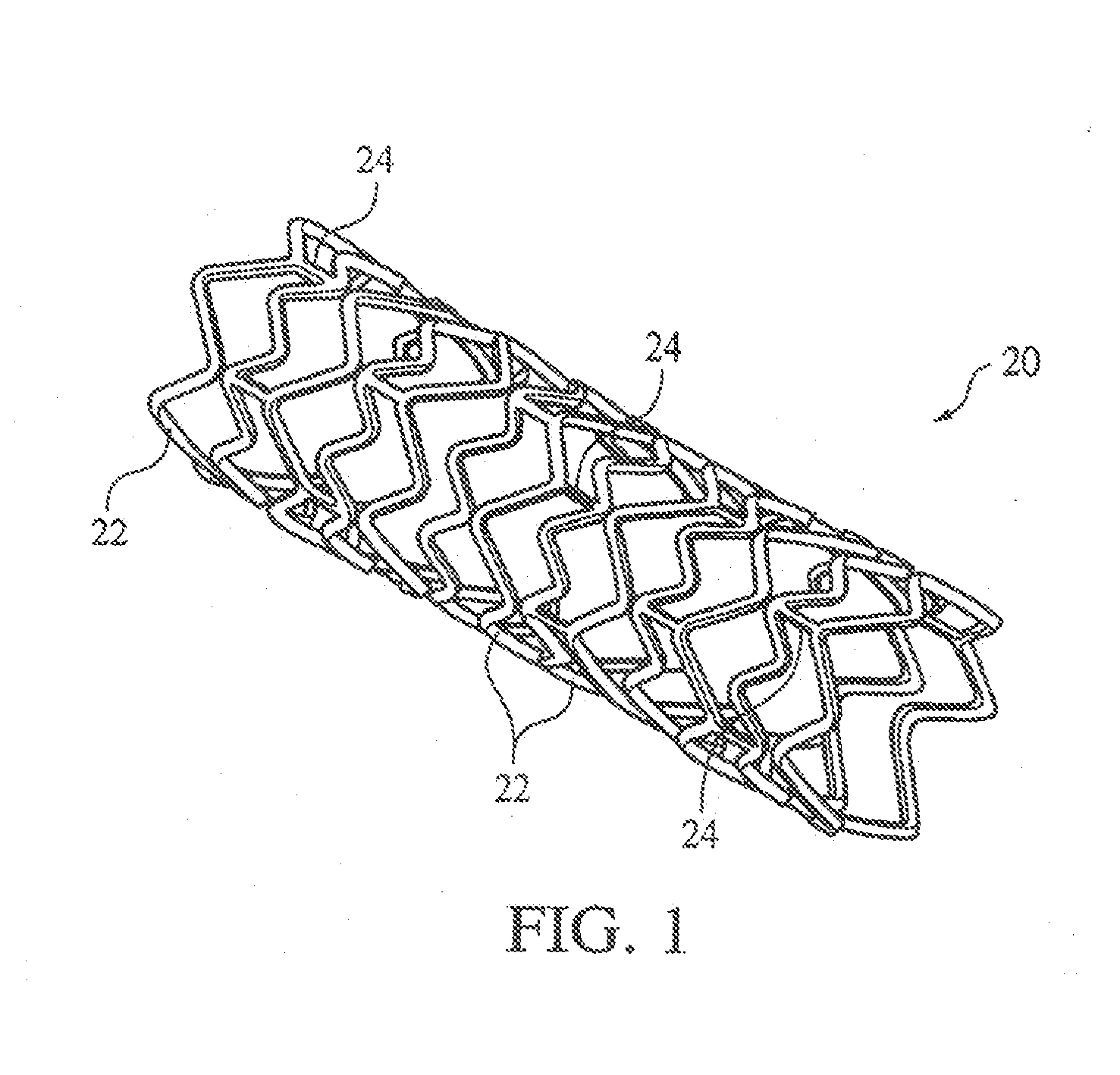Bioerodible Magnesium Alloy Microstructures for Endoprostheses
a bioerodible magnesium alloy and endoprosthesis technology, applied in the field of microstructures of bioerodible magnesium alloys, can solve the problems of not being able to achieve even possible, many of these bioerodible materials, however, have significant drawbacks, and achieve the effect of improving mechanical properties
- Summary
- Abstract
- Description
- Claims
- Application Information
AI Technical Summary
Benefits of technology
Problems solved by technology
Method used
Image
Examples
Embodiment Construction
[0016]A stent 20, shown in FIG. 1, is an example of an endoprosthesis. Stent 20 includes a pattern of interconnected struts forming a structure that contacts a body lumen wall to maintain the patency of the body lumen. For example, stent 20 can have the form of a tubular member defined by a plurality of bands 22 and a plurality of connectors 24 that extend between and connect adjacent bands. During use, bands 22 can be expanded from an initial, small diameter to a larger diameter to contact stent 20 against a wall of a vessel, thereby maintaining the patency of the vessel. Connectors 24 can provide stent 20 with flexibility and conformability that allow the stent to adapt to the contours of the vessel. Other examples of endoprostheses include covered stents and stent-grafts.
[0017]At least one strut of stent 20 can be adapted to erode under physiological conditions. In some cases, stent 20 is fully bioerodible. Stent20 can include a bioerodible magnesium-aluminum alloy with relativel...
PUM
| Property | Measurement | Unit |
|---|---|---|
| Temperature | aaaaa | aaaaa |
| Temperature | aaaaa | aaaaa |
| Temperature | aaaaa | aaaaa |
Abstract
Description
Claims
Application Information
 Login to View More
Login to View More - R&D
- Intellectual Property
- Life Sciences
- Materials
- Tech Scout
- Unparalleled Data Quality
- Higher Quality Content
- 60% Fewer Hallucinations
Browse by: Latest US Patents, China's latest patents, Technical Efficacy Thesaurus, Application Domain, Technology Topic, Popular Technical Reports.
© 2025 PatSnap. All rights reserved.Legal|Privacy policy|Modern Slavery Act Transparency Statement|Sitemap|About US| Contact US: help@patsnap.com



